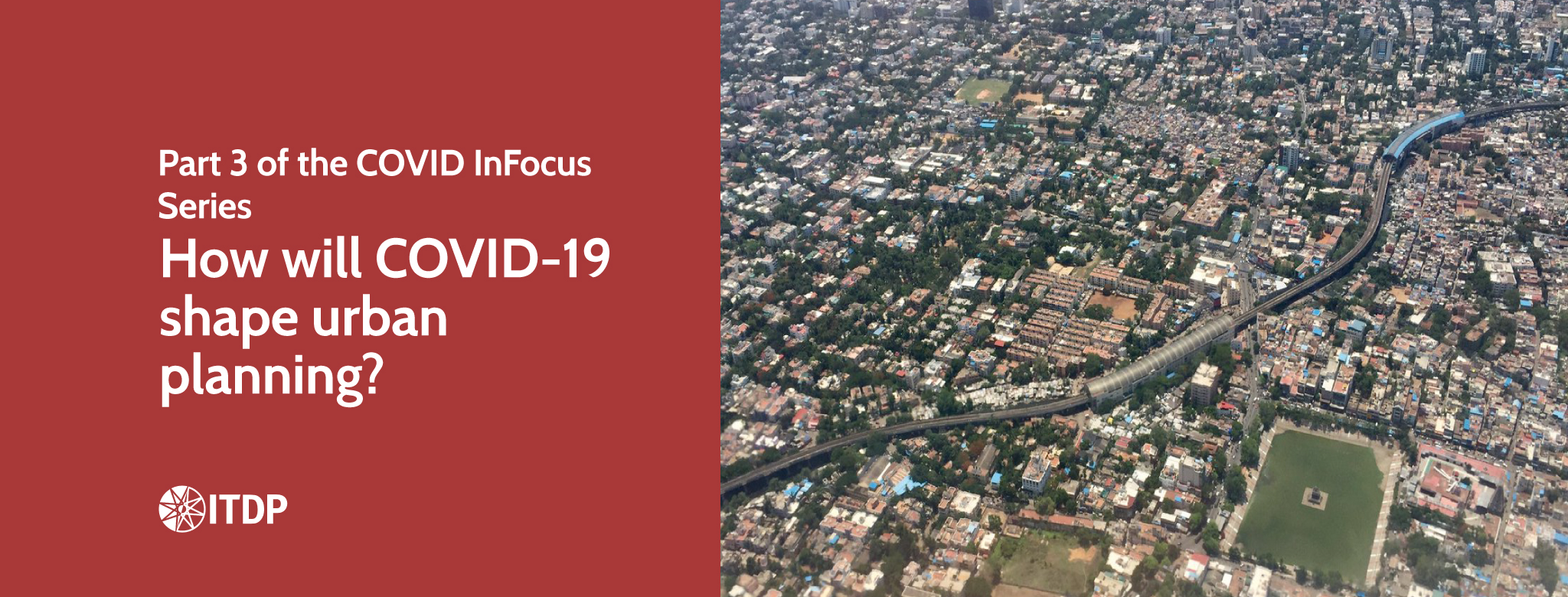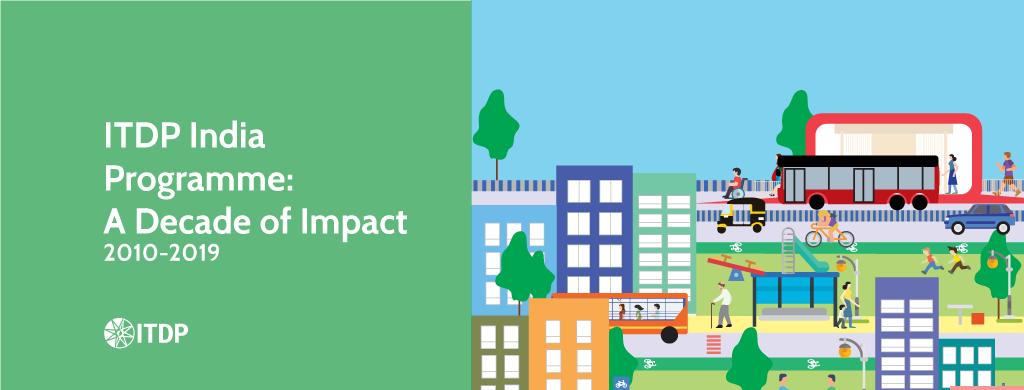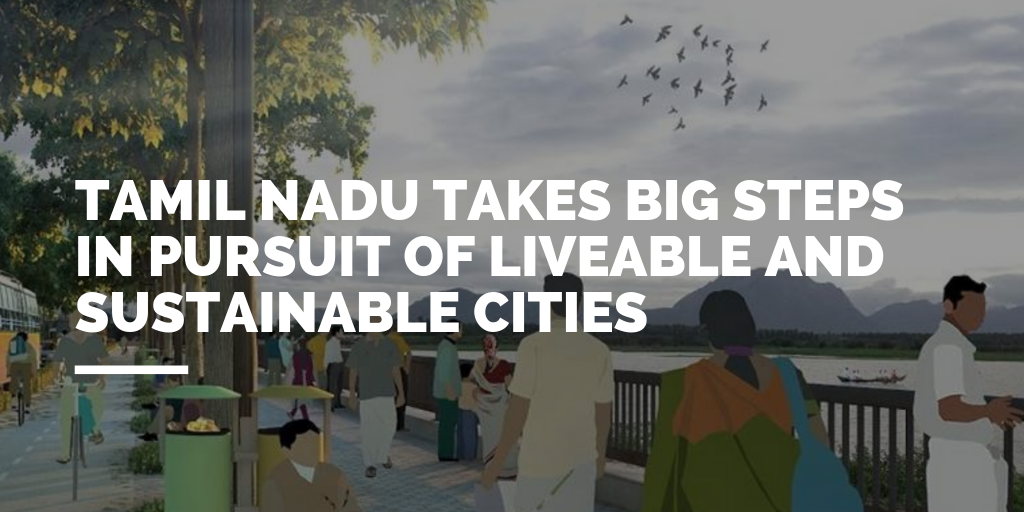The COVID-19 pandemic has monopolised public attention for the last few months, changing the ways in which we live, work, and navigate the world. Experts predict that the periodic lockdowns and social distancing measures we have instituted may need to stay until the development of a vaccine. Cities, which are home to over half of the world’s population, have been the worst affected by the pandemic and these mandates especially with respect to access to economic, education and social opportunities. It is important to understand how urban planning is connected to the spread of diseases and how pandemics can reshape our cities.
The current crisis raises several questions about our cities. Many have been quick to jump at blaming population density and compact urban form for contributing to the spread of the virus. Is this really the case? How can we ensure equitable access to open spaces, and help build immunity and health? Can active mobility play a role in the designing and restructuring of urban spaces? To address all these aspects in the long-term, cities must holistically consider the people, economy, and the environment. The lessons from COVID-19 present an opportunity to rebuild inclusive, compact cities that lead to healthier ways of living. We take a look here at how urban spaces will transform post-pandemic and how our response to these changes can ensure long-term benefits.
COVID-19 is an issue of unsustainable urbanisation

Source: SeongJoon Cho/Bloomberg
Throughout history, pandemics such as the Black Death, Cholera, and SARS have reshaped the planning, management, and sanitation systems of cities. COVID-19 will add to the list, influencing key aspects at the intersection of urbanism and diseases. This pandemic tells the story of rapid urbanisation and human encroachment on natural habitats, which leave us increasingly susceptible to unknown pathogens that originate in animals. However, it also illustrates the tale of how actions are no longer restricted to a local effect. “COVID-19 is really a story of peri-urban and rural-to-urban connections, in places that are often not on the global map…So sure, you have some of the global connections at airports, but it’s a much more complex urban system”, says Micheal Acuto, professor of global urban politics in the School of Design at the University of Melbourne.
The megacities of our times ensure that the entire world is connected through a series of transport, production, and consumption networks. The digital revolution has also brought the world together, making this pandemic different from previous ones. The advancements in urban data have allowed people to track the virus seamlessly and could inform city planning in the coming years. “Modern planning and civil engineering were born out of the mid-19th century development of sanitation in response to the spread of malaria and cholera in cities. Digital infrastructure might be the sanitation of our time”, he infers. Read the full interview with CityLab here.
Why Density Matters

Source: Tannen Maury/EPA, via Shutterstock
As the world scrambles to maintain distance from each other, the shortcomings of density during a pandemic has been raised persistently. This is because the need for social distancing during these times is against any fundamental philosophies of urban spatial design, which typically celebrate the dense nature of cities. However, it is important to note that compact cities have several economic and environmental benefits. Dense environments foster health and build resilience, preventing the growth of sprawling, car-centric cities. The array of options – medical, transit, and housing available in these areas allow users to make the switch, when one system fails or proves to be unfeasible. “Density makes mass transit possible. It allows for more affordable housing. It creates environments where people can walk and where children can find playgrounds…It allows us to curb climate emissions, which present a public health problem of an entirely different kind”, reports the New York Times.
The increase in bike-sharing in New York in March, when public transit shut down, illustrated that services in dense neighbourhoods can usually be accessed by walking or cycling. Further, compact cities are more favourable to services from the private sector – such as food, retail, hospitality, and leisure. We should also remember that stories of citizens delivering essential goods to people in need, and checking up on the elderly have shown that tightly wound social networks can save people, especially during emergencies. “…It will be a shame if we come away from this moment skeptical of density itself, or if some of the benefits of density, like mass transit and bustling commercial corridors, suffer lasting damage”, writes Emily Badger for the New York Times.
The need for sustainable mobility-oriented city planning
The lessons in urban planning from COVID-19 are also connected to the opportunities for the transport sector. The importance of ‘hyper proximity’ – the Parisian idea of 15-minute mixed-use neighbourhoods that provide all amenities while being connected by walking and cycling, can lead to safer, cleaner streets that prioritize pedestrians. This is also evident from the staggering increase in active mobility during the lockdown, which has been prompted further by various initiatives from local governments. “A supply side intervention, such as the provision of interconnected infrastructure for active mobility, could influence travel behavior of urban residents. Types of infrastructure that promote active mobility include exclusive walking and cycling lanes, walkways and wide footpaths, cycling tracks, interconnected parks and resting areas along the routes” suggests The United Nations Economic and Social Commission for Asia and the Pacific (UN ESCAP).
It is also important that these are backed by policies, funding, and advocacy to ensure a long-term framework for the city. The connection between infrastructure, active mobility, and health can then be used to build resilience against future pandemics and emergencies. UN ESCAP presents five key strategies –
(1) Plan compact cities based on public transport and active mobility,
(2) Prioritize active mobility as part of public transport,
(3) Plan and develop related infrastructure for active mobility,
(4) Develop resting areas and public parks, and
(5) Improve environments along walking/cycling routes by planting trees and beautification.
Read the full article here.
Steps ahead for Planners

Source: Veethika, Wikimedia Commons
For cities to prepare themselves in the future, CityFix proposes five strategies that planners must keep in mind –
(1) Focus on Access to Core Services – Access to services such as water, housing, and healthcare should be a key component when planning for density. This will ensure that all people in highly crowded cities are able to handle pandemics effectively.
(2) Affordable Housing and Public Spaces – There will be an additional 2.5 billion urban dwellers by 2050 and it is important that cities frame laws and policies to improve existing informal settlements and to provide access to affordable housing and healthy living conditions.
(3) Integrated Green and Blue Spaces – The coordination between green spaces, water systems, and built infrastructure will avert natural disasters, build resilience, and lead towards climate change mitigation and environmental sustainability.
(4) Increased City-Regional Planning – Integrated economical, social, transport, and energy planning of regional areas will ensure that the ripple effects of local actions are foreseen and controlled.
(5) More City-Level Granular Data – Strong digital infrastructure through the integration of public and private sectors at the local level can inform long-term planning through a data-driven approach.
“As lockdowns stretch on in many places, we are only beginning to understand how COVID-19 will affect how we approach urban planning. Planned for properly, density is a good thing for cities, and it will be again. We will rebuild our crucial economic and social fabric. It’s our decision to rebuild better”, concludes CityFix.
A resilient future
We need to make our cities resilient. This pandemic has highlighted some weaknesses of our approach and offers us the possibility of reorienting ourselves. We can act now to make our cities resilient not just to deal with a pandemic, but to mitigate the worst effects of the climate emergency. Countries around the world have only 10 more years to attain the Sustainable Development Goals (SDGs) and it is imperative that urban resilience acts as a pivot to achieve them.
Long-term solutions must focus on the vulnerable, integrate decision making, and encourage local leadership in our fight against climate emergency. The transformations in mobility, retail, office culture, food dependency, and data privacy must combine equitable advantages for the society and the environment. As cities adopt a slew of policies to bounce back better and faster, the ones that focus on adaptability and environmental resilience will be the ones that survive.
Compiled by Aditi Subramanian
Cover image source: Srini Swaminathan
This article is the third part of a series on the impact of COVID-19 on our cities and mobility. Check out the first part on the response of transit agencies to COVID-19 and the second on the impact on the environment and climate change.













